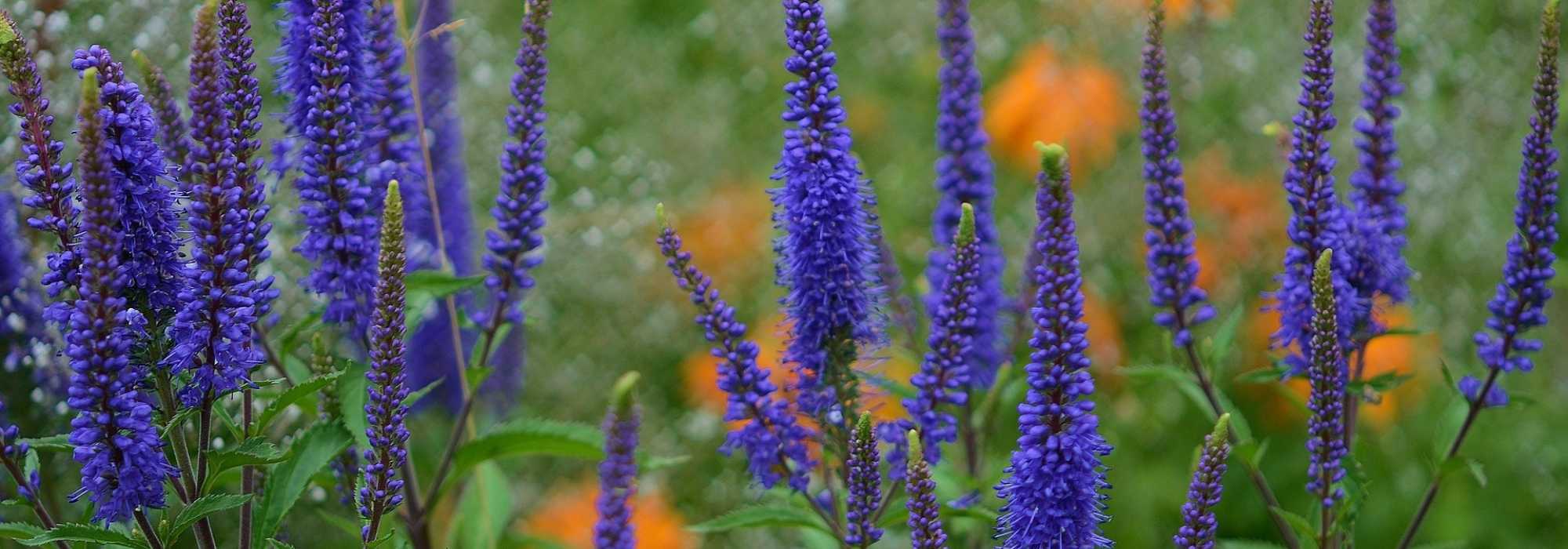
Perennial veronica: planting and care
Contents
Perennial veronica, in a nutshell
- Veronicas are herbaceous perennial or annual plants that, depending on their habit, are suitable for borders, beds, rockeries or to dress a low wall.
- Bushy species such as longifolia and spicata form long upright spikes in a range of colours, providing structural interest in the garden.
- Creeping species produce, with great lightness, small bright-blue corollas, sometimes white, solitary or in short clusters, amid fine foliage.
A word from our expert
Veronicas are perennials of varied appearance, either with a fairly rigid bushy habit bearing spikes that reach between 40 and 100 cm in height, or with a dwarf, creeping stump studded with small clusters of flat blue or white flowers. The first (Veronica longifolia, V. spicata) whose colour ranges from deep blue to mauve, violet, pink through to white have a structuring effect that, in a wild-looking garden, blends well with medium-sized grasses (Stipa tenuifolia, Muhlenbergia capillaris) or with other plants of an ill-defined habit such as hardy geraniums. They are equally suited to modern gardens, on a terrace, planted in a large pot, contrasted with plants with a round or tabular habit such as box, a holly cloud-pruned or Viburnum plicatum ‘Watanabe’.
The second (Veronica umbrosa, V. austriaca) are perfect in rockeries, following the shape of rocks, but also as groundcover on a bank or to dress the top or the gaps of a low wall.
Fairly hardy and easy to grow, veronicas like sunny or semi-shaded positions and grow in ordinary fresh, light soils. Most dislike very heavy soils soaked with water in winter, except perhaps Veronica gentianoides.
Shrubby veronicas native to the southern hemisphere were separated from the genus Veronica a few years ago and are now designated under the genus name Hebe.
Description and botany
Botanical data
- Latin name Veronica
- Family Plantaginaceae
- Common name Veronica
- Flowering between May and September
- Height between 0.30 and 1.80 m
- Sun exposure sun or partial shade
- Soil type any loose soil, well drained, even calcareous
- Hardiness Good to excellent (-15 to -40 °C)
Genus Veronica comprises nearly 180 species of herbaceous plants mainly distributed in northern hemisphere (25 species grow in African mountains).
Brooklime (Veronica beccabunga) is an aquatic Veronica. Shrubby veronicas, native to Chile or New Zealand, are now placed in genus Hebe. Phylogenetic classification considers Veronica close to plantains and since 2009 includes the genus in the family Plantaginaceae (formerly Scrophulariaceae), which has also gained around a hundred genera.
The most common species in our meadows is Persian speedwell (Veronica persica), an annual villous creeping plant, recognisable by its small solitary bright-blue corollas borne on a long peduncle, with 4 petals veined in dark blue (lower petal white), surmounted by 2 stamens, and by its foliage light green, ovate, opposite with a short petiole. Native to western Asia, the species spread through temperate Europe within two centuries and is often found in crops.
Ornamental creeping species are mainly prostrata, austriaca, petraea or pectinata. They form mats 30–50 cm in diameter and 5–10 to 30 cm in height. Bushy species include spike veronicas (spicata), long-leaved (longifolia) or Caucasian types (gentianoides).

Veronica longifolia – botanical illustration
Leaves of Veronica are deciduous or even semi-evergreen as in V. prostrata and take an ovate to very elongated shape as in Veronica longifolia, margins more or less crenate. Leaf arrangement is whorled or opposite, sometimes alternate on upper parts of stems as in Veronica persica.
Flowers, always fairly small (5–12 mm), are densely grouped in clusters or racemes (with peduncle), more rarely in spikes (without peduncle), offering a generous flowering, usually in summer. Dominant colour is blue, ranging from sky blue to vivid violet and gentian blues, but white or pink forms also occur. Numerous cultivars offer new colours such as the clusters of Veronica longifolia Candied Candle revealing a pretty gradient of pinks.
For botanical precision, the petals fused at the base are four in number but not strictly identical as in Brassicaceae where the flower is regular: the lower petal, situated in the plane of bilateral symmetry of the floral scheme, is smaller than the two lateral ones while the upper is much broader, suggesting it resulted from fusion of two posterior petals. This theory helped explain why other members of former Scrophulariaceae (now Plantaginaceae) such as mullein showed five petals. The calyx consists of four irregular sepals, sometimes five. The ovary is extended by a single style while three of the stamens are thought to have aborted, leaving only two stamens.
Fruit is a flattened or globular capsule, often heart-shaped.
Spring or summer flowering of veronicas generally attracts numerous pollinating insects.
Presence of the two prominent stamens gives the flower an odd face-like appearance and earned it the name Veronica. On the Stations of the Cross, Saint Veronica wiped Christ’s face, leaving an imprint on the veil called veronicon “the true image”. It is said that this cloth cured Emperor Tiberius of leprosy.
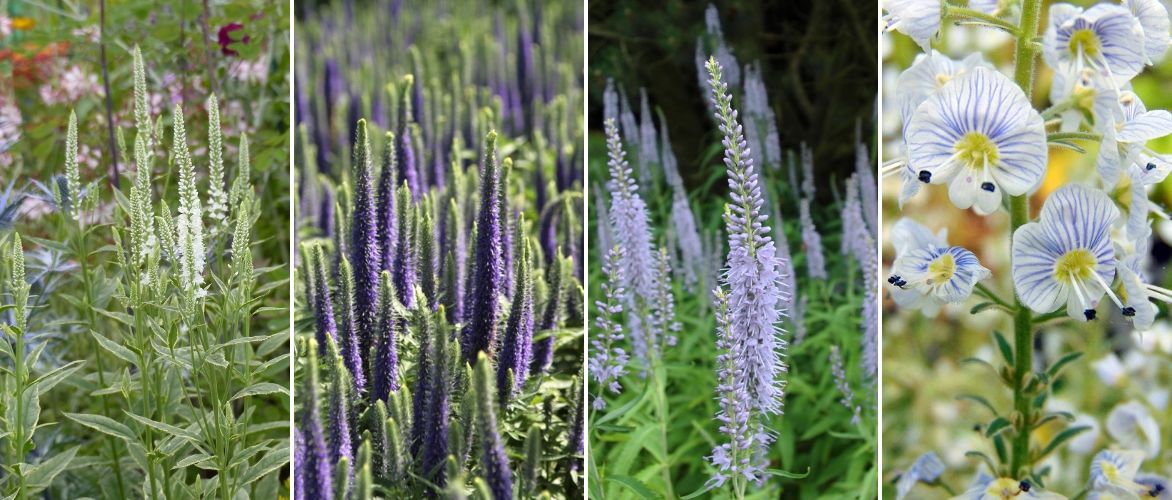
Some shrubby veronicas: Veronica longifolia ‘Charlotte’, Veronica spicata ‘Blue Candle’, Veronica longifolia ‘Lila Karina’, Veronica gentianoides ‘Variegata’

Some groundcover veronicas: Veronica prostrata, Veronica liwanensis, Veronica petraea ‘Madame Mercier’, Veronica umbrosa ‘Georgia Blue’
Veronica is known for certain medicinal virtues such as Veronica officinalis or V. chamaedrys, once used for astringent, healing and digestive properties, though their efficacy is now disputed.
Flowered stems of Veronica longifolia or prostrata are well suited to cut flower use.
Read also
Care of perennial plantsMain varieties of Veronica
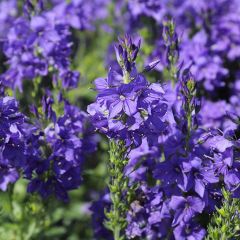
Veronica austriaca Knallblau
- Flowering time July, August
- Height at maturity 30 cm
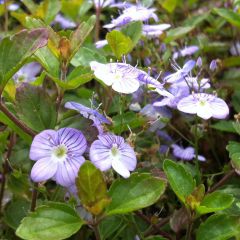
Veronica petraea Madame Mercier
- Flowering time June to August
- Height at maturity 15 cm
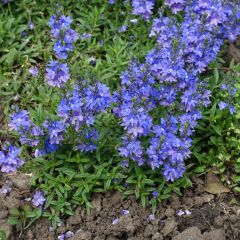
Veronica prostrata
- Flowering time June to October
- Height at maturity 15 cm
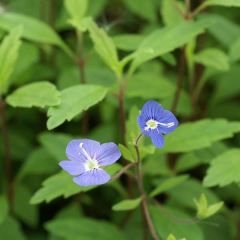
Veronica umbrosa Georgia Blue
- Flowering time April to June
- Height at maturity 15 cm
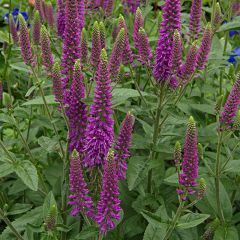
Veronica media First Match
- Flowering time August to November
- Height at maturity 60 cm
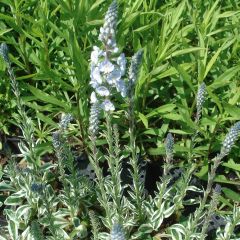
Veronica gentianoides Variegata
- Flowering time May to July
- Height at maturity 40 cm
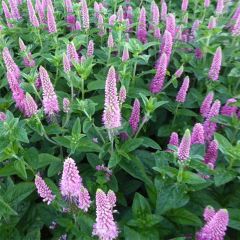
Veronica media First Love
- Flowering time August to October
- Height at maturity 30 cm
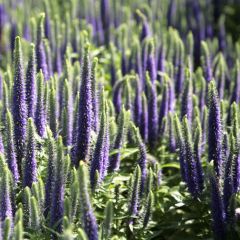
Veronica spicata Blue Candles
- Flowering time July to September
- Height at maturity 60 cm
Discover other Veronica - Speedwell
View all →Available in 1 sizes
Available in 1 sizes
Available in 1 sizes
Available in 2 sizes
Available in 3 sizes
Available in 0 sizes
Available in 0 sizes
Available in 2 sizes
Available in 1 sizes
Available in 3 sizes
Planting
Plant veronicas in rich, rather cool and well-drained, even moist soil for species gentianoides, filiformis (loamy, humus-bearing, non-calcareous soil for the latter), longifolia (clayey soil regardless of pH). Apart from a few exceptions, stony soil, cool at depth suits well even if calcareous. Even though flowering is more generous and growth more luxuriant in cool ground, veronicas tolerate drought once established, notably forms with downy, greyish foliage such as Veronica spicata subsp. incana.
Species spicata, longifolia, capable of tolerating frosts down to -35 to -40°C are adapted to montane climate.
Partial shade gives cooler soil and more abundant flowering but plant also tolerates full sun.
When to plant?
Best planting period is March–April or September.
How to plant?
Growing veronica presents no particular difficulty.
Here is how to plant :
- Plunge bucket into a bucket of water to moisten it well.
- Dig hole three times wider than rootball and loosen soil around with tines of fork-spade.
- Ensure good drainage if soil is clayey: add a few handfuls of sand and gravel to bottom of hole or opt for planting on a raised bed or within a rockery
- Add well-rotted manure or compost to encourage flowering.
- Place plant in planting hole.
- Backfill with soil and firm lightly.
- Water then apply a generous mulch to keep soil cool.
Care
- Carry out regular, deep watering during first summer in particular. Thereafter, water occasionally during prolonged drought.
- Cut faded spikes to encourage further flowering during the season.
- Wait until spring to carry out a pruning of dry branches, just after growth starts, and apply a generous layer of leaf mulch.
- Foliage of Veronica longifolia is sometimes covered with a whitish powder caused by powdery mildew in overly dry conditions. Move plant, mulch or water it more.
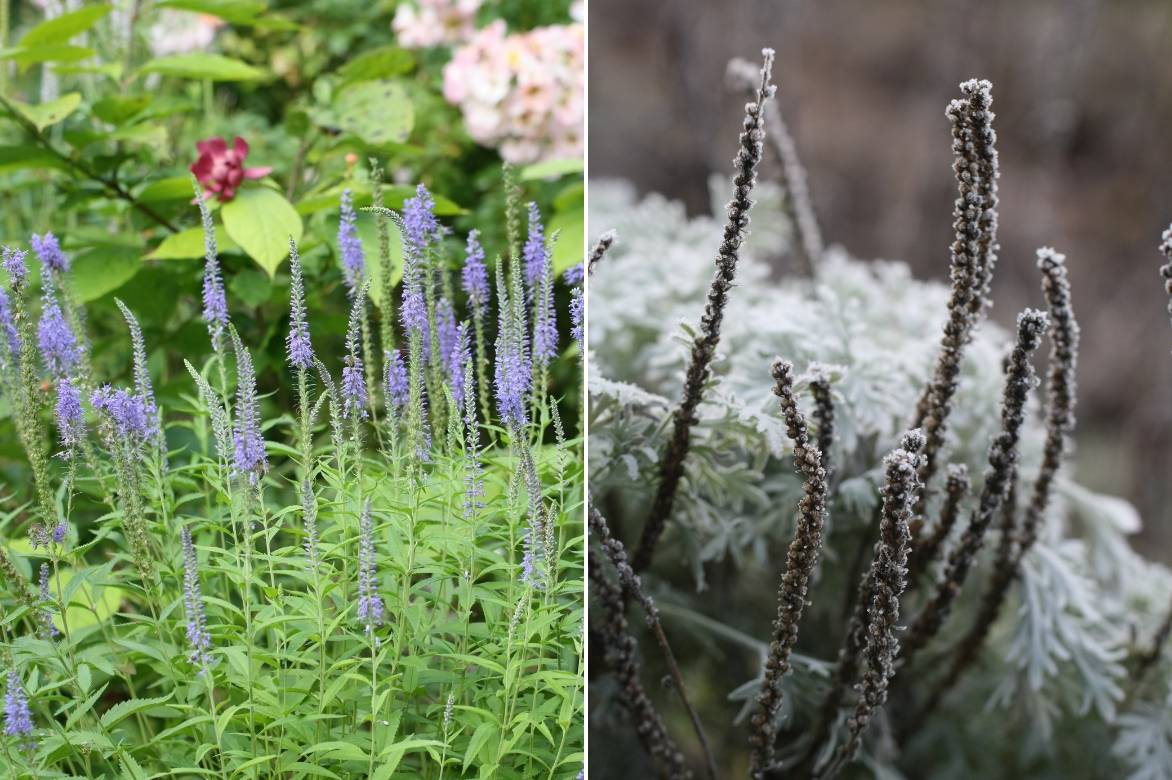
Veronica longifolia ‘Blauriesin’ in full flowering and Veronica spicata ‘Rotfuchs’ whose faded spikes are decorative in winter, especially when frost powders them white
Multiplication
Easiest propagation method is to divide a clump, but sowing is also fairly simple with typical species. Veronicas often self-sow.
Clump division
- In autumn, pull on creeping stems to extract a rooted offset.
- Replant immediately, adding some potting compost to the hole and water.
Sowing
- Sow veronicas in spring from April to June on warmed soil, or even in autumn.
- In a seed tray filled with seed compost or outdoors, scatter seeds and cover with a light dusting of sand.
- Keep medium cool and moist until germination.
- Pot up seedlings into buckets as soon as they can be handled. Earliest may flower the same year.
Uses and companion plants
Veronicas favour cool soils; bushy forms such as longifolia create luxuriant beds alongside Monarda, Phlox, Lobelia cardinalis, Eupatorium, etc. In drier soils or rockeries, they can equally accompany Stokesia, perpetual roses such as ‘Cornelia’, Anthemis tinctoria or cretica, chamomile.
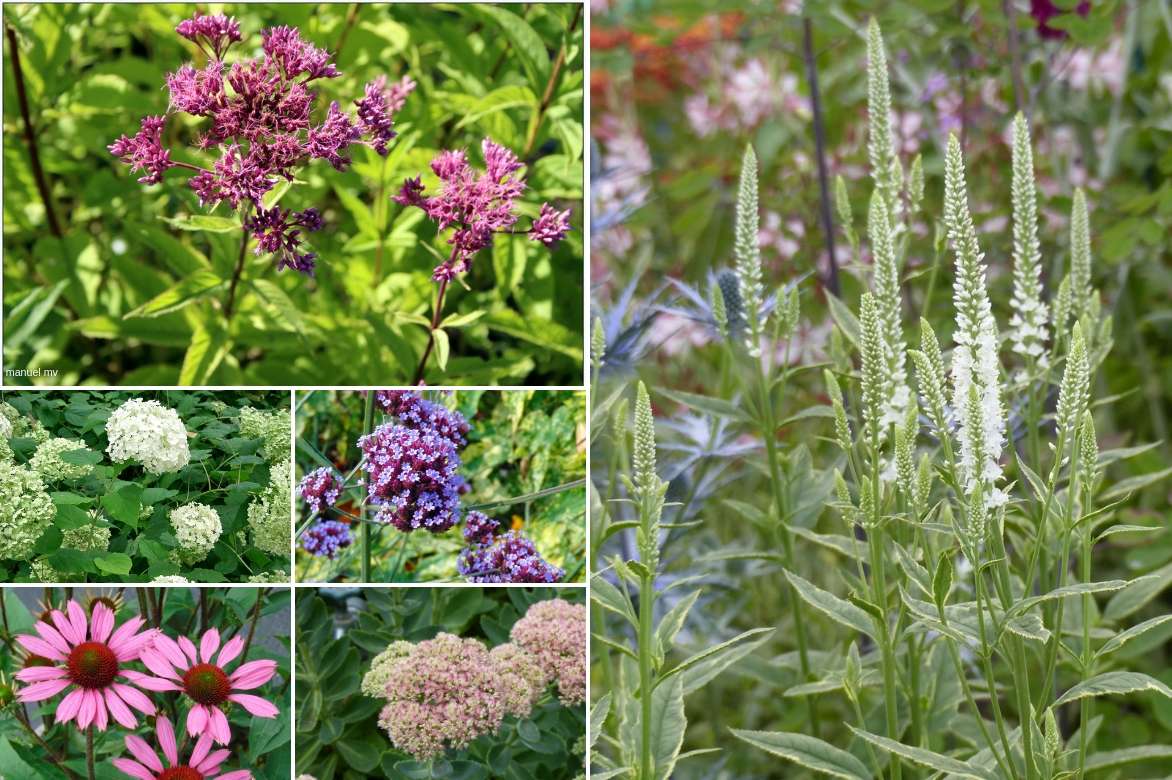
An example of a border combination: Veronica longifolia ‘Charlotte’ (or ‘Schneeriesin’ if you prefer green foliage), Eupatorium maculatum ‘Atropurpureum’ in the background, Hydrangea arborescens ‘Annabelle’ or ‘Incrediball’, Verbena bonariensis, Echinacea purpurea ‘Little Magnus’ and Sedum Autumn Joy’
The spiked Veronica (spicata) favours well-drained soils, even stony and calcareous, preferably in sun. It is ideal in a montane garden on stony soil. If it prefers a little coolness at its base, once established it tolerates drought fairly well. This perennial will be very useful for dressing the base of bush roses or in a raised border, on a bank, in a rockery, associated with Echinacea, Stipa, shrubby sages, Californian poppies or lavender. Its relatively supple spikes provide verticality and colour to a low border composed of very mat-forming plants such as aubrieta, wall bellflowers or cerastiums.
The dwarf creeping forms can form sunny edgings with Rhodanthemum hosmariense (in climates not too cold), Antennaria dioica ‘Rubra’, Globularia repens, Pulsatilla, Teucrium chamaedrys, Potentilla nitida or hardy geraniums (Geranium sanguineum). Under light bush cover they can sit alongside Lamium, Waldsteinia ternata or Epimedium. An alpine rockery, a stone trough or an edging will happily welcome Veronica petraea ‘Madame Mercier’, capable of spreading to 50 cm diameter, its glossy dark purplish semi-evergreen foliage cascading, covered with a lace of blue corollas veined with violet. This one can also accompany cool spots planted with Corydalis, alpine asters, a tapetum of Azorella trifurcata, Helxine or even dress the base of garden irises or Helleborus foetidus. Small spring veronicas can also be paired with tulip or narcissus bulbs so that their flexible stems thread through foliage with great elegance.
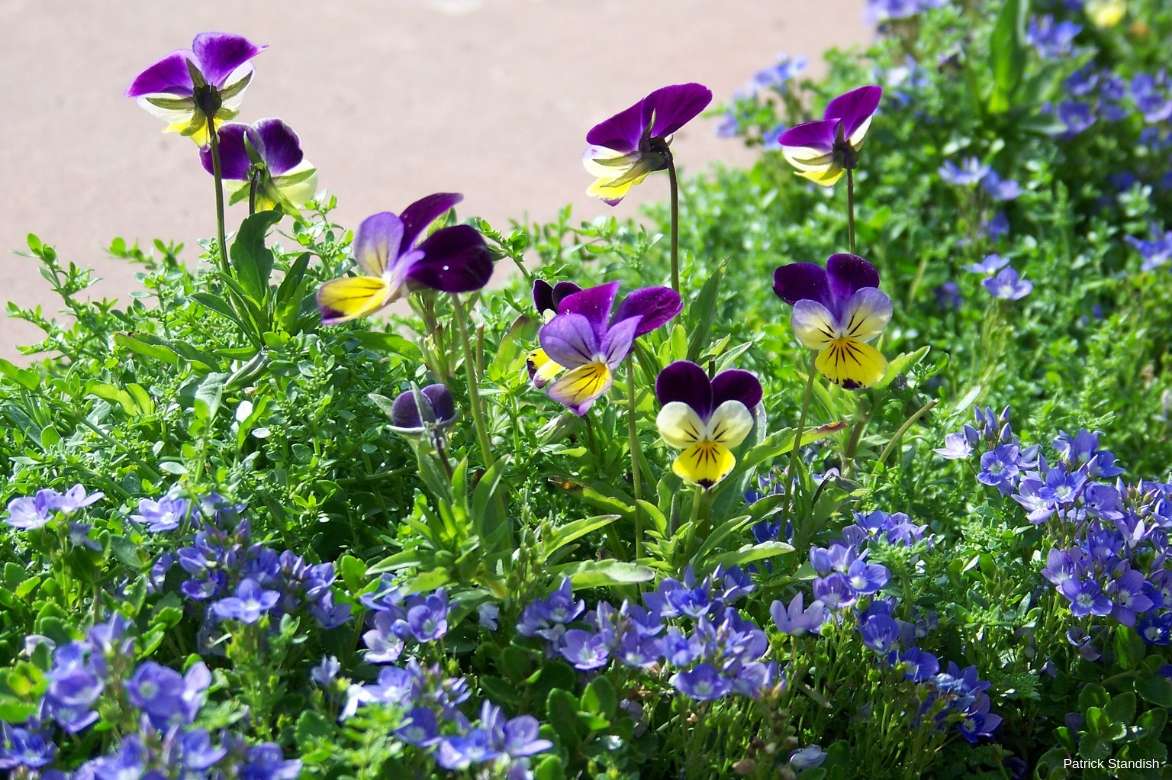
Groundcover Veronicas (Veronica liwanensis) also form a pretty colourful tableau with small Violas
The prostrate Veronica (prostrata), with its vigorous rooting stems bristly with charming spikes, naturally lends itself to ornamenting rather grassy rockeries, for example reconstituted alpine meadows, but also thrives on large sunny banks, even occasionally dry. It will be very useful and very attractive along an avenue, planted en masse and edged with alchemilla or snow-in-summer, or in a rockery.
Further reading
Discover our range of perennial veronicas.
- Subscribe!
- Contents
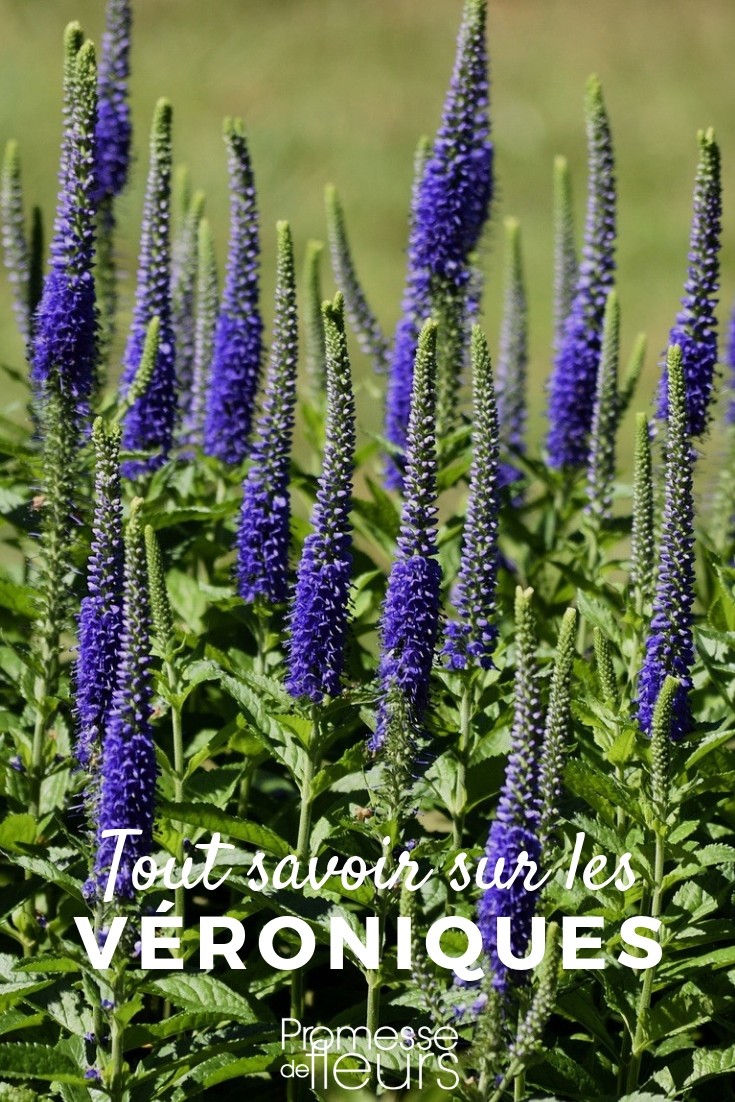































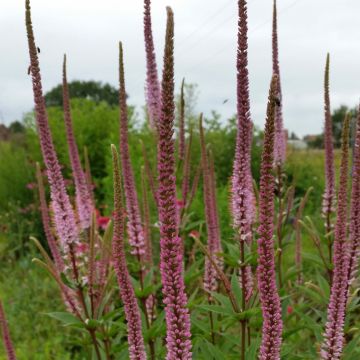
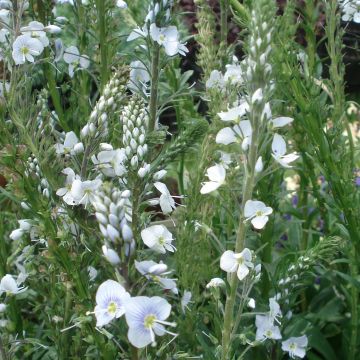
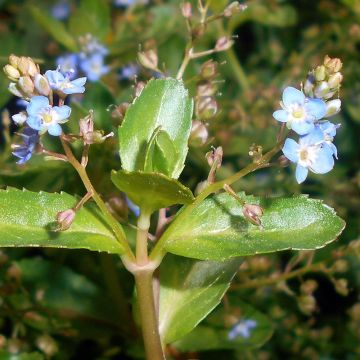
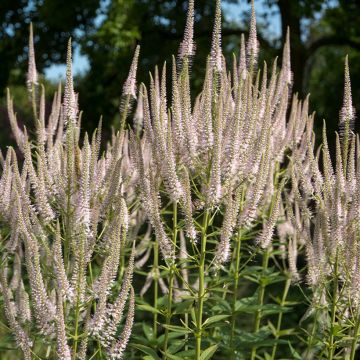

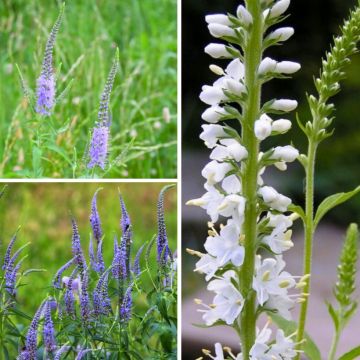
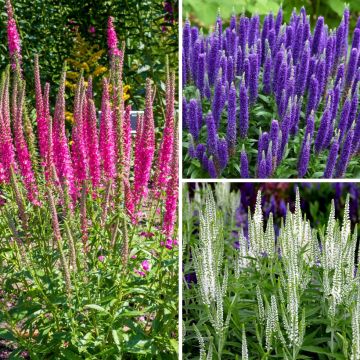
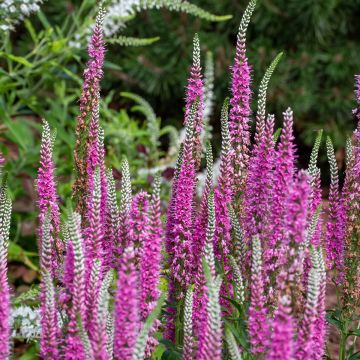

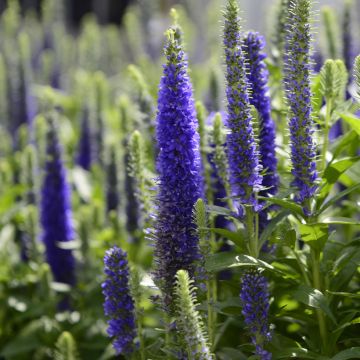
Comments